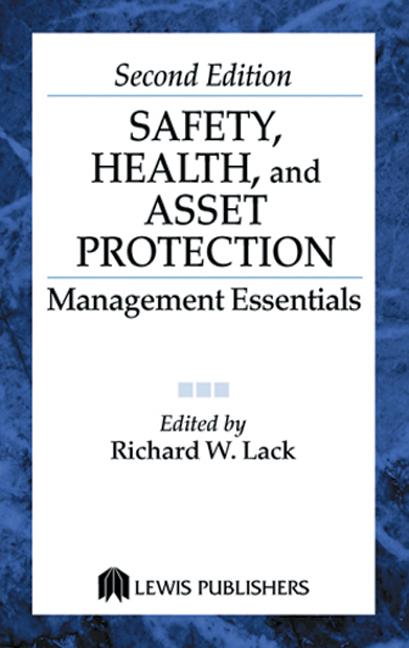Mining fatalities decrease, New Mexico ag workers exposed to pesticides and the reasons behind the construction industry’s resistance to using fall protection are among the week’s EHS-related stories as featured on ISHN.com:
 Safety activists slam Walmart’s Bangladesh factory improvement plan
Safety activists slam Walmart’s Bangladesh factory improvement plan
Critics call it a “toothless” scheme that lacks enforcement
A proposal unveiled this week by Walmart and the Gap aimed at improving safety for garment factory workers in Bangladesh who make the goods sold by the retailers has been met with jeers by labor and safety activists, who say the plan is badly flawed and puts profits above safety.
OSHA, union to focus on San Diego shipyard safety
Topics include confined space safety, respiratory protection
OSHA and the Shipyard Workers Union have agreed to work together to improve workplace safety and health among shipyard workers in San Diego. The alliance formed recently between the two entities includes guidance and training programs and a awareness-raising about hazardous operations onboard ships during building and repair periods.
2012 had lowest fatality rate in history of U.S. mining industry
Violations down by 18 percent
Figures released Wednesday by the Mine Safety and Health Administration (MSHA) revealed that 2012 had the lowest fatality and injury rates in the history of U.S. mining, along with the lowest rate of contractor fatalities since the agency began calculating those rates in 1983.
Construction fall protection options are numerous – so why aren’t they used more?
ASSE journal article surveys types, explains resistance
It’s not news that falls from height cause the majority of work-related fatalities among residential construction workers (64 percent, according to a 2011 report by the BLS).
Cadmium exposure results in OSHA citations
Regency Technologies faces $66,000 in fines
Workers at an Ohio electronics recycling facility were exposed to cadmium, a toxin known to cause cancer that targets the body’s cardiovascular, renal, gastrointestinal, neurological, reproductive, and respiratory systems.
Noise exposure expert wins Henry F. Smyth, Jr. Award
Dennis P. Driscoll, P.E., to be recognized at upcoming AIHA Fall Conference
Noise exposure expert Dennis P. Driscoll, P.E. will be recognized for his contributions to noise control and hearing conservation at the AIHA Fall Conference, being held September 28 through October 2 in Miami, Fla.
Texas meatpacker cited for safety management program violations
Anhydrous ammonia used in refrigerator system
OSHA has cited Caviness Beef Packing Ltd. in Hereford, Texas, with 25 safety violations. Proposed penalties total $120,000 for deficiencies in its process safety management program and various workplace hazards.
Maryland court: Employer not responsible for take home exposure to asbestos
Granddaughter who did asbestos worker's laundry suffered lung disease
Maryland’s Court of Appeals has ruled that asbestos companies are not responsible for illnesses suffered by family members of asbestos workers who brought the substance home with them in their clothing prior to 1972.
EPA’s failure in West, Texas explosion is “outrageous,” says Senator
Despite urging, agency didn’t add ammonium nitrate to its oversight list
The chair of the Senate committee that investigated the West, Texas fertilizer plant explosion yesterday slammed the EPA for failing to include ammonium nitrate – the substance which caused the fatal blast – in its list of hazardous chemicals that require oversight.
New study suggests link between breast cancer, working the night shift
Circadian rhythm disruption, melatonin decrease could be factors
A new study has found that working the night shift long-term may double a woman’s risk of breast cancer. The association was found in women who did night shift work for 30 or more years. The researcher team led by Kristan Aronson, a professor of public health sciences at the Queen's Cancer Research Institute at Queen's University in Kingston, Ontario, found no increased risk among women who worked that shift fewer than 30 years.
Help wanted: Safety Inspector, Bangladesh
Effort to improve factory safety conditions includes new safety pro
EHS professionals who are interested in a professional challenge – and living abroad – may want to send a resume to the steering committee of the Accord on Fire and Building Safety in Bangladesh, a multi-national effort to bring about safer and healthier conditions for factory workers in Bangladesh.
Florida workers stressed out about hurricanes
Study finds high anxiety related to possibility of storms
Recent uneventful hurricane seasons have done little to calm Florida workers’ fear of hurricanes, according to a new study by Wayne Hochwarter, the Jim Moran Professor of Business Administration at the Florida State University College of Business.
How to have a healthy and safe family reunion
Suggestions from the CDC
Been to a family reunion lately? For many Americans, they include high-fat foods (grilled burgers, anyone?), potato salad made from Grandma’s recipe (and left to sit out in the sun all afternoon), salty snacks and excessive amounts of alcohol.
Miner sued for filing discrimination complaint
Court orders company to drop suit against fired employee
An administrative law judge has ruled that a Madisonville, Ky., mining company violated the anti-discrimination provisions of the Federal Mine Safety and Health Act of 1977 when it sued a miner for filing a discrimination complaint with the Mine Safety and Health Administration (MSHA) following his job termination.
OSHA Q&A: steel erection work with unprotected surface edge
Question: At what distance from an unprotected side or edge does a worker, performing steel erection activities under 29 CFR 1926 Subpart R with a fall hazard greater than 15 feet, be required to have fall protection?
Report: New Mexico’s ag workers lack safety & health protection
Pesticide poisoning described as “pervasive”
Many of New Mexicos’s agricultural employers are excluded from the enforcement and oversight activities of OSHA, leaving many workers toiling in unsafe conditions – and often earning below minimum wage, says a new report.
MSHA’s emergency lifeline standard upheld in court
Regulation came after multiple-fatality mine disasters
U.S. Court of Appeals for the District of Columbia Circuit recently upheld a decision that the failure to maintain emergency lifelines in a manner for miners to use effectively is a significant and substantial violation of the Federal Mine Safety and Health Act of 1977, regardless of the likelihood of a mine emergency actually occurring at the time of the violation.
Who turned off the locomotive that kept train in place?
Canadian officials probe mystery behind runaway train that caused fatal fiery crash
While emergency responders in Quebec, Canada sift through the wreckage for bodies which may never be found -- due to the intensity of the blaze caused by a train derailment on Saturday -- officials are focusing on why the train came loose from its overnight parking spot.
Alaskan seaplane accident kills 10
NTSB is investigating
An NTSB go-team been dispatched to Soldotna, Alaska to investigate a seaplane crash yesterday that claimed the lives of ten people. The accident involving a de Havilland DHC-3 Otter occurred at 11:20 a.m. (3:20 p.m. ET).
One of S.F. plane crash fatalities may have been killed by fire truck
Pilot was in training on Boeing 777 model
While the National Transportation Safety Board (NTSB) and other agencies investigate Saturday’s Asiana Airlines crash at San Francisco International Airport, the local coroner’s office is trying to determine whether one of the two fatalities in the incident was caused by a fire truck that was rushing to the burning plane.
Plan. Provide. Train. Three simple steps to preventing falls
OSHA has partnered with the National Institute for Occupational Safety and Health and National Occupational Research Agenda (NORA) - Construction Sector on this nationwide outreach campaign to raise awareness among workers and employers about common fall hazards in construction, and how falls from ladders, scaffolds and roofs can be prevented and lives can be saved. Here's how:


